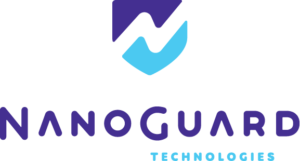

The tightening of food standards has led to a shift in which companies large and small are investing significant dollars, with much of the spending devoted to new technologies. The additional emphasis on prevention means an increasing number of digital solutions are finding their way to the market. A recent article in Technology Networks highlights how these technologies run the gamut from genome sequencing and smart packaging to sensors and food-protection processes. (Full disclosure: This is where our company, NanoGuard Technologies, is spending much of its focus.)
All said, the future continues to advance new and exciting technologies, driven by the desire to improve the prevention and identification of contamination. As we continue to see this appetite to further food-safety improvements, we’ll also see an increasing number of companies investing in each of these areas. If you were to look at the venture capital space, it’d be difficult to ignore the spike in interest.
While the fix isn’t as straightforward as other areas of the food industry, the potential return is well worth the risk. In the first quarter of 2021, food technology investments totaled $13.5 billion. Investments did fall to $8.9 billion in the second quarter, but that’s still a great deal of attention being paid to the food industry. And much of the funding was focused on creating a safer, more reliable food system. While this may have been in response to the global pandemic, it’s still a big win for consumers and producers alike.
Being centuries old, the food-production industry clearly understands the importance of good manufacturing practices to minimize the potential of contamination. Clean facilities can limit (if not eliminate) the spread of pathogens most likely to show up down the line in the food supply chain, for example.
Where many manufacturers are now focusing their attention is in precision cleaning, which often entails a strict written protocol for cleaning procedures that never deviate from the schedule. It’s not that cleaning is done more often, as this can damage the product-contact surface and lead to other issues. It’s more about establishing a proper regimen in which the team members clean the components within the prescribed limits to ensure that any potential contaminants have been eliminated from the equipment.
The other area where the food industry is experiencing a great deal of positive movement is with smart packaging and its associated technologies. Smart packaging tech generally helps manufacturers in a few specific ways: measuring the freshness, temperature, and microbial growth of goods—and in real time.
Smart sensors are quickly becoming the next-generation technology in the food industry. If it follows its current trajectory, smart sensors will likely be found in almost every aspect of food packaging. If you were to look at microbial contamination, advances in food technology have allowed manufacturers to detect even the slightest change in the gas composition of a sealed package.
The same is true for changes in pH or the release of volatile compounds. Let’s say E. coli and salmonella were concerns. You could find an antitoxin-based RFID sensor to detect either one of these bacteria in packaged foods. The sensor uses antitoxins immobilized on RFID tags that are incorporated within food packaging to detect the potential of contamination. All that’s necessary is to attach the sensor to the equipment and a wireless network to provide real-time monitoring.
Identifying contaminants can give an organization the ability to mitigate issues as soon as they appear. Decreasing the potential early on — even small amounts — can have compounding benefits, averting problems from spreading down the supply chain and forestalling cataclysmic repercussions for all parties involved.